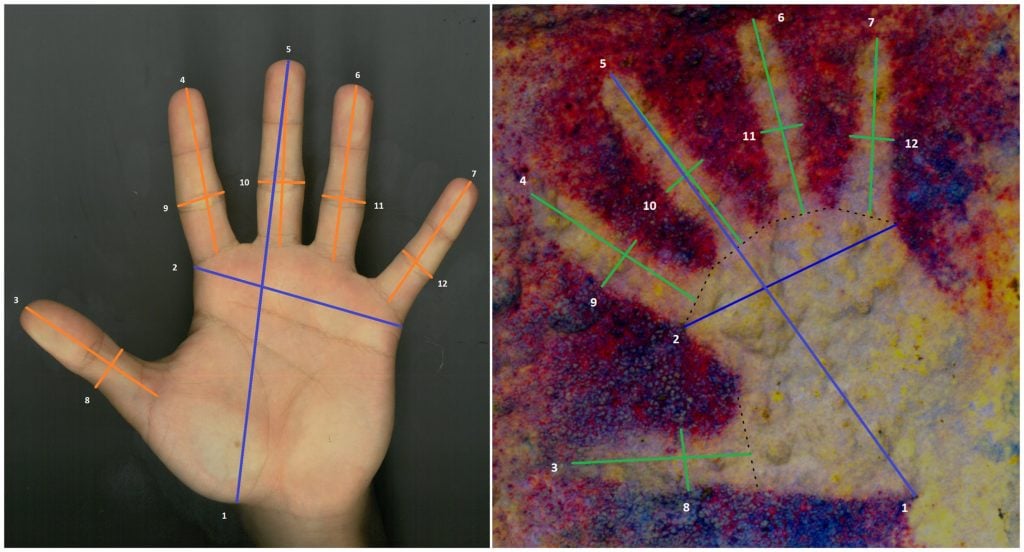Archaeology & History
A Study of Prehistoric Painting Has Come to a Startling Conclusion: Many Ancient Artists Were Tiny Children
Researchers also believe that the painted handprints contain coded signals.

Researchers also believe that the painted handprints contain coded signals.

Sarah Cascone

New research is shaking up our image of art-making in Paleolithic times, arguing that children or even toddlers may have been behind some of world’s earliest known art. The findings suggest that ancient rock painting was actually a family-oriented group activity, not a solitary male pursuit.
For a study published in the Journal of Archaeological Science, researchers from Cambridge University and Spain’s University of Cantabria examined 180 hand stencils painted in Spanish caves some 20,000 years ago. The study used 3-D models of hand paintings in Spain’s El Castillo, Maltravieso, Fuente de Salín, Fuente del Trucho, and La Gama caves, created by the Handpas Project.
These prehistoric images would have been made by blowing pigments through a hollow reed or bone onto hands placed against the cave wall—a process that would have made the outlines slightly larger than the hands themselves.
Accounting for that difference, the researchers found that up 25 percent of the hand marks were not large enough to belong to adults or teenagers. They guessed that they came from children between two and 12 years of age, with the majority of those likely made by three to 10-year-olds.

A) The photogrammetry process of making measurements using photographs. B) Experimental hand stencil. C) Experimental hand stencil 3-D model. D) Modern sample of scanned hands. Photo courtesy of Verónica Fernández-Navarro.
“Many more children’s hands came out than we expected,” lead author Verónica Fernández-Navarrogical told the Telegraph. “It would appear that artistic activity was not a closed activity closely linked to male individuals and the survival of the group, as had been thought until now.”
Because the smaller children would not have been able to blow the pigment hard enough to create the markings, we can safely assume that their parents or other adults were helping them. Painting could have been an important communal activity for Paleolithic peoples.
Fernández-Navarrogical is now working to further analyze the hand markings to determine if the gestures made in some images carry any meaning. She suspects that bent fingers in some of the hand silhouettes, which seem to appear in recurring patterns, could have been used as a form of non-verbal language.
“We want to find out if it is a code that they knew how to interpret, in the same way that we today interpret a ‘stop’ sign,” she added.
Children also believed to be responsible for what could be the world’s oldest art, a set of ancient hand and foot prints found in Tibet last year that were made between 169,000 and 226,000 years ago.